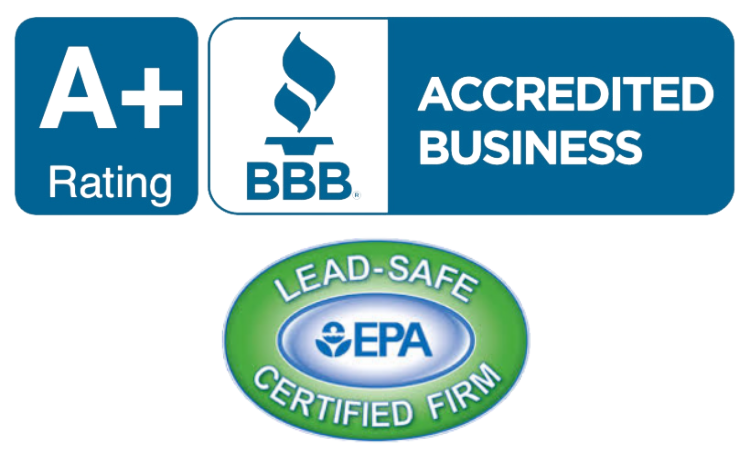Getting HOA clearance for exterior paint choices is crucial to maintaining neighborhood aesthetics. To maintain the community’s appearance, the HOA has exterior paint color guidelines. This post will provide advice and techniques for obtaining HOA approval for your paint choices.
Understanding the HOA’s rules and regulations
Before painting the exterior, you must read the HOA bylaws. Colors, finishes, and application processes will be specified in these guidelines. Understanding these regulations will help you avoid problems and streamline approval.
Start by visiting your community’s website or calling the HOA to identify and examine its rules. They may have a website section with exterior paint color details. Note any color palettes or limits in the rules.
Researching popular exterior paint colors
Researching popular exterior paint colors has many benefits. First, it gives you color scheme ideas. Second, because many homeowners have picked them, popular colors often work. This boosts trust in your selections and HOA approval.

Many resources can assist you in finding popular exterior paint colors. Pinterest and Houzz provide inspiration through selected collections and real-life examples. Many paint manufacturers showcase popular exterior colors each year in color trend projections. Use these resources to brainstorm and choose.
Choosing colors that complement your home’s architecture
Your home’s architectural style should guide exterior paint color selection. Different architectural types have unique traits and historical color palettes to help you choose. Choosing colors that match your home’s architecture will generate harmony and beauty.
Traditional color choices with rich, deep tones may suit Victorian-style homes. A simple and monochromatic color scheme may benefit a modern or contemporary home. Research your home’s architectural style and corresponding color combinations.
Creating a color scheme that blends with the neighborhood
Colors should express your unique style, but they should also match your neighborhood’s. A coherent neighborhood boosts property values and fosters homeowner solidarity.
Note the colors your neighbors choose to develop a neighborhood-friendly color scheme. Look for color family or undertone similarities. Instead of matching your neighbors’ colors, choose ones that complement the palette.
Providing samples and swatches for the HOA to review
The HOA requires paint color samples and swatches for approval. They can see how the colors will look on your home and make an informed decision. Samples show your compliance and transparency.
Consider displaying samples and swatches on a board or brochure with each color’s name and brand. HOA members can compare and assess options more easily. Include information about your paint finishes and application methods.
Explaining the benefits of your chosen color scheme
Explain the benefits and logic behind your color scheme to the HOA. This can ease their anxieties and show that you examined the impact of your color choices.
Explain how your home’s lighter outside hue reflects sunlight and cools the interior in summer. Show how your bright front door accent color adds flair and curb appeal. Explaining the benefits of your color scheme might boost approval.
Addressing any concerns or objections from the HOA
During approval, the HOA may object to your color scheme. These issues must be addressed respectfully and constructively. Accept their input and make improvements as needed.
If the HOA objects to a color decision, offer alternatives that meet their needs while retaining your aesthetic. Remember that compromise is typically necessary in these situations, and finding common ground will improve results.
Compromising on certain aspects of the color scheme
Being flexible is key to getting HOA clearance for exterior paint choices. While you may have a vision, you must explore HOA-compliant alternatives.

If the HOA offers changes or colors that comply with their requirements, consider them. Compromising doesn’t mean giving up your style; it means finding a solution that pleases both sides.
Working with a professional painter to ensure quality results
After receiving permission for your color scheme, choose a professional painter for the best effects. Professional painters know how to prepare and apply paint for a long-lasting, attractive finish.
Choose a professional painter based on reputation, expertise, and portfolio. Ask for references and similar project samples. For your safety and property, make sure they’re licensed and insured.
Following up with the HOA to ensure approval
After painting, check with the HOA to make sure they like it. This shows your commitment to following their requirements and communicating along the process.
Contact the HOA for a final project inspection. To secure acceptance, handle minor revisions or touch-ups immediately. Follow up to avoid issues and misconceptions.
Maintaining open communication with the HOA throughout the process
Keep in touch with the HOA throughout the exterior paint color approval process. This involves informing them of your plans, updating them on the project, and answering their questions.
Check with the HOA regularly to inform them of your plans and timeframe. Respond to queries and provide paperwork or information quickly. Open contact with the HOA builds trust and a good relationship.
Obtaining HOA clearance for exterior paint colors may seem difficult, but these advice and methods might help. Understand your HOA’s rules, research popular colors, choose colors that complement your home’s architecture and blend with the neighborhood, provide samples and swatches for review, explain the benefits of your chosen color scheme, address concerns and objections, compromise, work with a professional painter, follow up with the HOA, and keep communication open. You may boost your HOA approval odds and choose a stunning, harmonized exterior paint color by using these guidelines.

